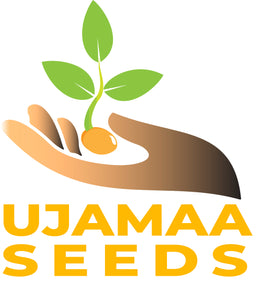Honey Locust
Gleditsia triacanthos
Seeds per pack ~ 15
Germination: (Packed for 2025)
Also called thorny locust, on account of the vicious thorns (so big the biggest thorns have thorns themselves and have a history of use as nails!), honey locust is a native leguminous tree found in river valleys in the central-eastern US, from Texas and Alabama in the south to eastern Kansas and central Pennsylvania in the north.
It has long been a valued agroforestry tree for its sweet pods that can be eaten by livestock like hogs. Good for wildlife like deer too. The sweet pulp inside the pods is edible by humans as well, along with the seeds and sprouts. The wood is long-lasting and durable, making some beautiful furniture. And the plant seems to be capable of some nitrogen-fixing, though it does not make root nodules like many nitrogen-fixing legumes. The plant is loaded with phytochemicals and has a long history of use as a medicinal plant by indigenous people. Thornless seedlings do sometimes appear, and have become popular street trees — as this species can handle whatever nature or humans throw at it.
We got these South Dakota-grown seeds from Sheffield's Seed Company in Locke, NY, who add: "The pods have been made into a tea for the treatment of indigestion, measles, catarrh etc. The juice of the pods is antiseptic. Current research is examining the leaves as a potential source of anticancer compounds. The seeds have been roasted and used as a coffee substitute. The pulp of the seedpods is sweet and can be eaten raw or made into sugar. The render young seedpods can be cooked and eaten."
Growing Info, follow in order: Scarification: Pour boiling water over seed , let stand in water for 24 hours, repeat process on seed that did not imbibe. Stratification: none required. Germination: sow seed 1/2" deep, tamp the soil, mulch the seed bed. Other: if boiling water treatment does not allow seed to imbibe, sulfuric acid treatment is required.
GUIDELINES - FALL SOWING TREE SEEDS-PDF FOR PRINTING
|
GROWING INFORMATION |
|
|
Scarification |
Pour boiling water over seed, let stand in water for 24 hours, repeat process on seeds that did not imbibe |
|
Stratification |
None required |
|
Germination |
Sow seed 3/8” deep, tamp the soil, mulch the seed bed |
|
Other |
If boiling water treatment does not allow seed to imbibe, sulfuric acid treatment is required |




